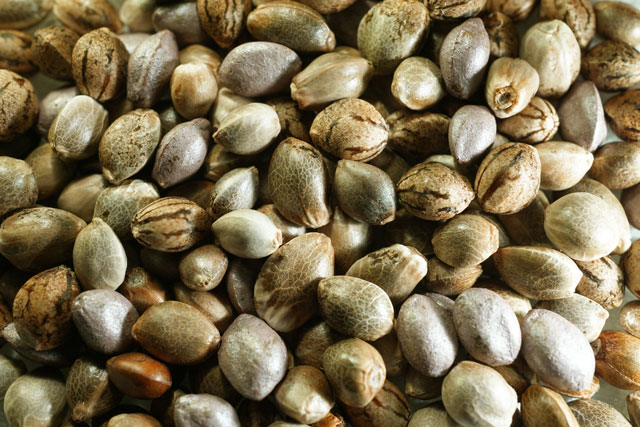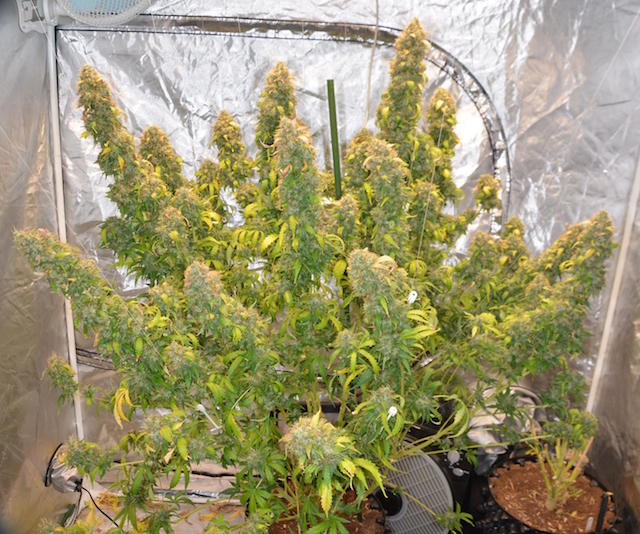Cannabis breeds and crosses: How to make

Cannabis breeds and crosses
Dutch Passion are frequently asked about the best techniques to make cannabis breeds and crosses. In this weeks blog we list a few of the most popular methods for creating autoflower seeds and feminized seeds.
Selective breeding or artificial selection
Sometimes a breeder has a specific goal in mind when making cannabis breeds and crosses, such as stabilizing a particular aroma, taste or appearance.
The search for this particular characteristic may follow a process often known as selective breeding, sometimes it is called artificial selection. Parent plants are selected for a particular quality, such as a fruity aroma, or taste.
By crossing parent varieties with the genetics for a similar trait you increase the chances that the offspring will also share those characteristics. With selective breeding there are further tips and tricks which breeders can use to further increase the consistency and genetic similarity of the cannabis seeds.
For example, a plant can be back crossed with a parent or grandparent to further increase the chances of a particular characteristic being expressed in the offspring.

Hybrid F1 crossing
On other occasions a cannabis breeder may try something altogether different, and cross two quite different and genetically diverse cannabis seed varieties. This is quite a different breeding philosophy to selective breeding.
With a hybrid cross you are taking two separate gene pools and mixing them together hoping to produce something that is better than either parent. The results can both surprise and disappoint. When two different cannabis cultivars are crossed you don’t necessarily get an immediate 50/50 blend of the genetics, that can take lots of hard work to fine-tune.
Benefits
But one of the real benefits of creating a hybrid is that the growth may show significantly improved form and speed, better than either parent. This is a process known as Heterosis, it has been manipulated many times by breeders of traditional farm crops such as Maize.
This phenomena is also known as ‘outbreeding enhancement’ and cannabis growers may be more familiar with the other terminology for heterosis which is ‘hybrid vigor’. If the cannabis hybrid has its traits enhanced as a result of combining the different genetic contributions from the parent cannabis varieties it is described as showing hybrid vigor.

Heterosis or hybrid vigor
Cannabis seeds with real growth potential
Hybrid vigor is one of the real benefits of a hybrid cannabis variety for the home grower. Seeds produced from crossing two distinct cannabis varieties can grow with more speed and strength than either parent. That can mean larger harvests, faster bud development and ultimately more THC and cannabinoid production.
Cannabis seeds produced by hybridising two different cannabis varieties are often called F1 cannabis seeds, or ‘first generation’ crosses. F1 cannabis seeds can only be produced by crossing two specific parent plants, and usually the cannabis breeder will have looked at numerous parent plants before deciding on the final two plants.
Good quality cannabis hybrid
A good quality cannabis hybrid is often the result of 2-3 years of work and the parents are highly prized and well cared for. Once one of the parent varieties disappears/dies so does the F1 hybrid. If you cross F1 seeds together you will get an ‘F2’ or second generation cross which may not be quite the same as the original F1 cross.
For cannabis, to get the best level of heterosis the parent plants should be both stable/homogenous and genetically diverse. Note also that the first cross between two diverse and stable genetic lines can produce offspring that are quite different. To stabilise these results, back crossing can be used.

Parent selection
cannabis breeds and crosses
Usually the best cannabis breeders will make several hybrid attempts and grow seeds from them all, looking for the best expression of hybrid vigor and of course the highest THC/cannabinoid analysis results.
These days laboratory cannabinoid analysis is an important aspect of breeding feminized cannabis seeds or autoflower seeds. It allows the professional breeder a comprehensive understanding of the quality of the parent plants and the offspring.
Professional lab analysis
With professional lab analysis the job of hybridising cannabis varieties is made significantly easier and allows the breeder a transparent comparison of the results and progress. It also allows the breeder to quickly discard ineffective breeding lines and focus on the best approach.
Often there will be several specially selected parent plants from each of the two varieties being hybridised. The best breeders will know the cannabinoid profile of all the parents, and usually these are all selected for e.g. high THC levels, heavy yields, ease of growth, stability etc.
Excellent THC levels & heavy yields
But the important part of the hybridisation is seen when the first batch of cannabis seeds is produced from the two different parents, a successful hybrid is one which outperforms either parent in growth and retains excellent THC levels and heavy yields. Often the breeder will prefer the fastest blooming result, or perhaps the easiest growing F1 cannabis seeds.
These days most cannabis growers leave the job of breeding to the specialist cannabis seed companies. After all, most cannabis home growers only need 10-20 seeds per year. Buying cannabis seeds online is far easier than making your own cannabis crosses.
Creating a truly excellent, stable new cannabis variety can take a skilled team several years. And the advice to home growers remains the same, you don’t use that many cannabis seeds each year so get the best cannabis seeds you can from a seedbank that you can trust. And enjoy your home grown cannabis!

Basic Guides
Popular varieties
- Auto Blackberry Kush ®
- Auto Blueberry ®
- Auto Brooklyn Sunrise ®
- Auto Cinderella Jack ®
- Auto Colorado Cookies ®
- Auto Daiquiri Lime ®
- Auto Duck ®
- Auto Durban Poison
- Auto Euforia ®
- Auto Frisian Dew
- Auto Glueberry O.G. ®
- Auto Lemon Kix ®
- Auto Mazar ®
- Auto Night Queen ®
- Auto Orange Bud ®
- Auto Think Different
- Auto Ultimate ®
- Auto White Widow ®
- Auto Xtreme ®
- Blue Auto Mazar ®
- Blueberry ®
- Brainstorm
- Bubba Island Kush ®
- C-Vibez ®
- CBD Auto White Widow ®
- CBD Charlotte’s Angel ®
- CBD Compassion ®
- CBD Kush ®
- CBD Skunk Haze ®
- Critical Orange Punch ®
- Desfrán ®
- Durban Poison ®
- Euforia ®
- Freddy’s Best ®
- Frisian Dew ®
- Frisian Duck ®
- Glueberry O.G. ®
- HiFi 4G ®
- Hollands Hope ®
- Jorge’s Diamonds #1 ®
- Kerosene Krash ®
- Master Kush
- Mazar ®
- Meringue ®
- Mokum’s Tulip ®
- Night Queen ®
- Orange Bud ®
- Orange Hill Special ®
- Outlaw Amnesia ®
- Pamir Gold ®
- Passion #1®
- Passion Fruit ®
- Power Plant ®
- Purple #1 ®
- Skunk #11 ®
- StarRyder ®
- Strawberry Cough ®
- Sugar Bomb Punch ®
- The Ultimate ®
- Think Big ®
- Think Fast ®
- White Widow
















